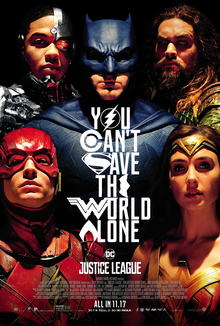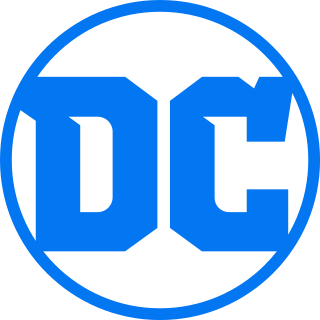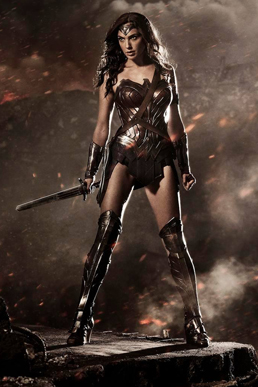In public use, a director's cut is the director's preferred version of a film. It is generally considered a marketing term to represent the version of a film the director prefers, and is usually used as contrast to a theatrical release where the director did not have final cut privilege and did not agree with what was released.

Steppenwolf is a supervillain appearing in comic books published by DC Comics. Created by writer-artist Jack Kirby, the character first appeared in New Gods #7. A New God and military general from the planet Apokolips, Steppenwolf is Darkseid's uncle and subordinate who commands his army of Parademons.

Zachary Edward Snyder is an American filmmaker. He made his feature film debut in 2004 with Dawn of the Dead, a remake of the 1978 horror film of the same name. Since then, he has directed or produced a number of comic book and superhero films, including 300 (2006) and Watchmen (2009), as well as the Superman film that started the DC Extended Universe, Man of Steel (2013), and its follow-ups, Batman v Superman: Dawn of Justice (2016) and Justice League (2017), the latter of which had a director's cut released in 2021. He also directed the animated film Legend of the Guardians: The Owls of Ga'Hoole (2010), the psychological action film Sucker Punch (2011), the zombie heist film Army of the Dead (2021), and the two-parter space opera films Rebel Moon (2023) and Rebel Moon – Part Two: The Scargiver (2024).

The Justice League, also called the Justice League of America or JLA, is a fictional superhero team that appears in comic books published by DC Comics. Since their first appearance in The Brave and the Bold #28, various incarnations of the team have appeared in film, television, and video game adaptations.

The Batman franchise, based on the fictional superhero Batman who appears in American comic books published by DC Comics, has seen the release of various films. Created by Bob Kane and Bill Finger, the character first starred in two serial films in the 1940s, Batman and Batman and Robin. The character also appeared in the 1966 film Batman, which was a feature film adaptation of the 1960s television series starring Adam West and Burt Ward, who also starred in the film. Toward the end of the 1980s, the Warner Bros. studio began producing a series of feature films starring Batman, beginning with 1989's Batman, directed by Tim Burton and starring Michael Keaton. Burton and Keaton returned for the 1992 sequel Batman Returns, and in 1995, Joel Schumacher directed Batman Forever, with Val Kilmer as Batman. Schumacher also directed the 1997 sequel Batman & Robin, which starred George Clooney. Batman & Robin was poorly received by both critics and fans, leading to the cancellation of a sequel titled Batman Unchained.

DC Comics's Superman franchise, based on the character of the same name created by Jerry Siegel and Joe Shuster in June 1938, has seen the release of various films since its inception. The character debuted in cinemas in a series of animated shorts beginning in 1941, and then was the protagonist of two movie serials in 1948 and 1950. An independent studio, Lippert Pictures, released the first Superman feature film, Superman and the Mole Men, starring George Reeves, in 1951. In 1973, the film rights to the Superman character were purchased by Ilya Salkind, Alexander Salkind, and Pierre Spengler. After numerous scripts and several years in development, Richard Donner was hired as their director, and he shot two films, Superman (1978), and Superman II (1980), at the same time, both starring Christopher Reeve. Donner had already shot eighty percent of Superman II before it was decided to finish shooting the first film. The Salkinds fired Donner after Superman's release and commissioned Richard Lester as the director to finish Superman II. Lester returned to direct Superman III (1983). The Salkinds also produced the related spin-off Supergirl (1984). They then sold the rights to Cannon Films, which produced the poorly reviewed Superman IV: The Quest for Peace (1987). Ilya Salkind commissioned a fifth Superman script before Warner Bros. acquired the rights entirely in 1993.

The many incarnations of the DC Comics superhero Green Lantern have appeared in numerous media over the years.

Ray Fisher is an American actor. He is known for his portrayal of the superhero Victor Stone / Cyborg in the DC Extended Universe media franchise, first appearing in a cameo in the film Batman v Superman: Dawn of Justice (2016) and then in a lead role in the films Justice League (2017) and its 2021 director's cut. In television, he played roles in the third season of the crime drama series True Detective and the limited series Women of the Movement. He made his Broadway debut in the 2022 revival of the play The Piano Lesson.

Justice League is a 2017 American superhero film based on the DC Comics superhero team of the same name. Produced by Warner Bros. Pictures, DC Films, RatPac-Dune Entertainment, Atlas Entertainment, and Cruel and Unusual Films, and distributed by Warner Bros. Pictures, it is the fifth installment in the DC Extended Universe (DCEU). Directed by Zack Snyder who was replaced by Joss Whedon after Snyder left the project and written by Chris Terrio and Joss Whedon, the film features an ensemble cast including Ben Affleck, Henry Cavill, Gal Gadot, Ezra Miller, Jason Momoa, Ray Fisher, Amy Adams, Jeremy Irons, Diane Lane, Connie Nielsen, and J. K. Simmons. In the film, following the events of Batman v Superman: Dawn of Justice (2016) Batman and Wonder Woman recruit The Flash, Aquaman, and Cyborg after the death of Superman to save the world from the catastrophic threat of Steppenwolf and his army of Parademons.

The DC Extended Universe (DCEU) is an American media franchise and shared universe centered on a series of superhero films produced by DC Studios and distributed by Warner Bros. Pictures. It is based on characters that appear in American comic books published by DC Comics. The DCEU also includes comic books, short films, novels, and video games. Like the original DC Universe in comic books, the DCEU is established by crossing over common plot elements, settings, cast, and characters.
The 2017 film Justice League had a troubled production history, undergoing major changes before and during production, including a change in directors. This resulted in the theatrical release being markedly different from its conception in pre-production and principal photography.

Clark Joseph Kent, best known by his superhero persona Superman, is a superhero in the DC Extended Universe (DCEU) series of films, based on the DC Comics character of the same name created by Jerry Siegel and Joe Shuster. In the films, he is a survivor from the destroyed planet Krypton who lands on Earth and develops superhuman abilities due to environmental differences between the planets and their respective star systems.

Diana of Themyscira, also known by her civilian name Diana Prince or her superhero title Wonder Woman, is a fictional character in the DC Extended Universe (DCEU), based on the DC Comics character of the same name created by William Moulton Marston and H. G. Peter. First appearing in Batman v Superman: Dawn of Justice, she is portrayed by Gal Gadot and later plays a major role in the films Wonder Woman,Justice League, and Wonder Woman 1984, along with cameo appearances in Shazam! Fury of the Gods and The Flash. She has become one of the central characters in the DCEU. Gadot's performance as Wonder Woman, the first of the character in live-action cinema, has received critical praise.

Bruce Wayne, also known by his superhero vigilante alias Batman, is a fictional character in the DC Extended Universe (DCEU), based on the DC Comics character of the same name. The character was portrayed by Ben Affleck in Zack Snyder's 2016 superhero film Batman v Superman: Dawn of Justice, the 2017 film Justice League, Suicide Squad (2016), and The Flash (2023). Fans nicknamed this iteration of the character "Batfleck", a portmanteau of "Batman" and "Affleck". In the films' universe, Bruce had already been active as Batman for twenty years before the emergence of Superman, and despite being initially at odds with him to the point of paranoia and anger, Batman comes to appreciate the former, starting the Justice League in his honor after Superman's sacrifice to stop Doomsday. The Justice League, under Wayne's leadership, fights to prevent Steppenwolf from collecting the three Mother Boxes and destroying Earth alongside his master Darkseid, eventually resurrecting Superman to aid in their collective efforts.

Bartholomew Henry "Barry" Allen, also known as The Flash, is a fictional character in the DC Extended Universe (DCEU). Based on the DC Comics superhero of the same name, he is portrayed by American actor Ezra Miller. Originally appearing in a minor role in Batman v Superman: Dawn of Justice and Suicide Squad, Barry had a prominent role in the film Justice League, its director's cut, and in his titular film. Miller also reprised the role in cameo capacity in other DC Comics media such as the Arrowverse event series Crisis on Infinite Earths and in the HBO Max series Peacemaker. The DCEU marks the first time The Flash has been portrayed in live-action film.
Ray Porter is an American actor and audiobook narrator who is most widely known for portraying the DC Comics villain Darkseid in Zack Snyder's Justice League. He also did some voice acting work for The Scarecrow, The Path of Atticus: Gods and Monsters, and The Little Engine That Could.

The DC Extended Universe (DCEU) is an American media franchise and shared universe centered on superhero films and other series starring various titular superheroes produced by DC Films / DC Studios, distributed by Warner Bros. Pictures, and based on characters that appear in American comic books published by DC Comics. Despite numerous film series in the past on characters such as Superman, Batman, and Green Lantern, none of those film series were connected. The DCEU debuted in 2013 with Man of Steel, centered on Superman, and has grown to include other characters such as Batman, Wonder Woman, and several others included in this list. The shared universe, much like the original DC Universe in comic books, was established by crossing over common plot elements, settings, cast, and characters, and crossed over with separate timelines from other DC-licensed film series in The Flash to create a "multiverse" before being largely rebooted as the new DC Universe franchise under new management from DC Studios.

Zack Snyder's Justice League (Original Motion Picture Soundtrack) is the soundtrack to the film of the same name, itself a director's cut of the 2017 theatrical film which had its own soundtrack. Tom Holkenborg, also known as Junkie XL, composed the film's score; he had previously worked on a score for the theatrical version of Justice League, before being replaced by Danny Elfman following original director Zack Snyder's departure and Joss Whedon's arrival. Upon Snyder getting the chance to finish and release his version of the film, Holkenberg was brought back and decided to rescore the film from scratch. The album was released via WaterTower Music on March 18, 2021, the same day as the film's release, and was later released as a limited-edition 7-disc vinyl set on April 14. The film's score is notable as the longest in film history at nearly four hours long.

The DC Extended Universe (DCEU) media franchise has experienced a turbulent history since its inception in 2013, characterized by highly publicized clashes between studio executives and talent, constantly changing approaches to worldbuilding, and repeated changes in management. Warner Bros. Pictures originally announced plans for a shared universe of live-action films based on the DC Comics, starting with the release of Man of Steel (2013), with director Zack Snyder set to spearhead the franchise. Following the negative reception to Snyder's follow-up film Batman v Superman: Dawn of Justice (2016), Warner Bros. created DC Films, a new division led by Geoff Johns and Jon Berg tasked with overseeing development of the DCEU. DC Films attempted to correct the course of the franchise, culminating in the troubled production and disastrous release of the crossover film Justice League (2017), which significantly deviated from Snyder's original vision.
















